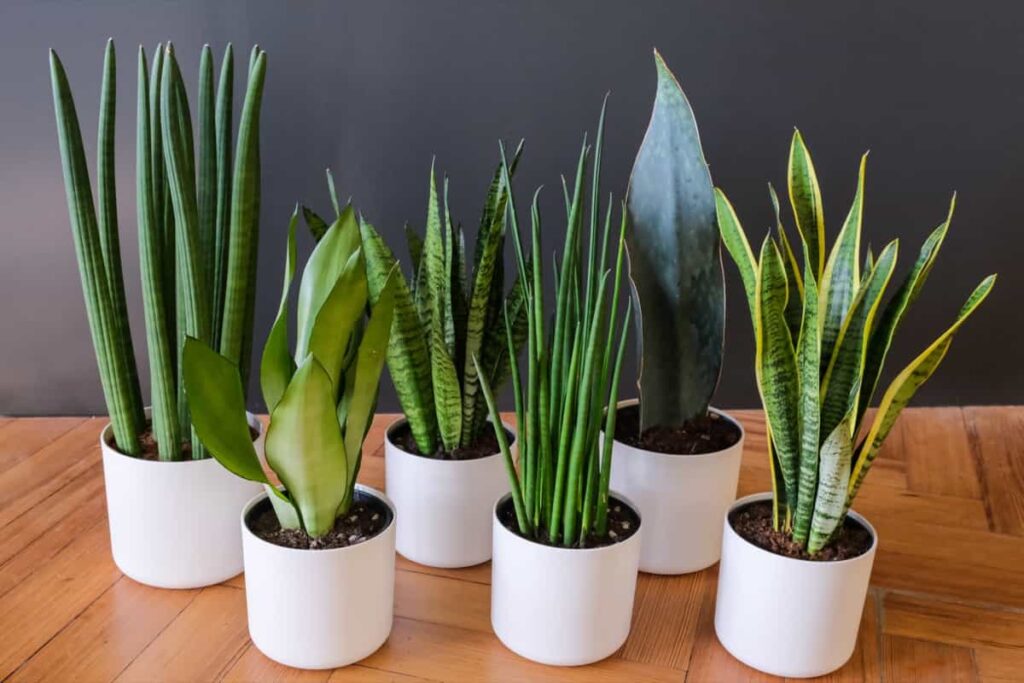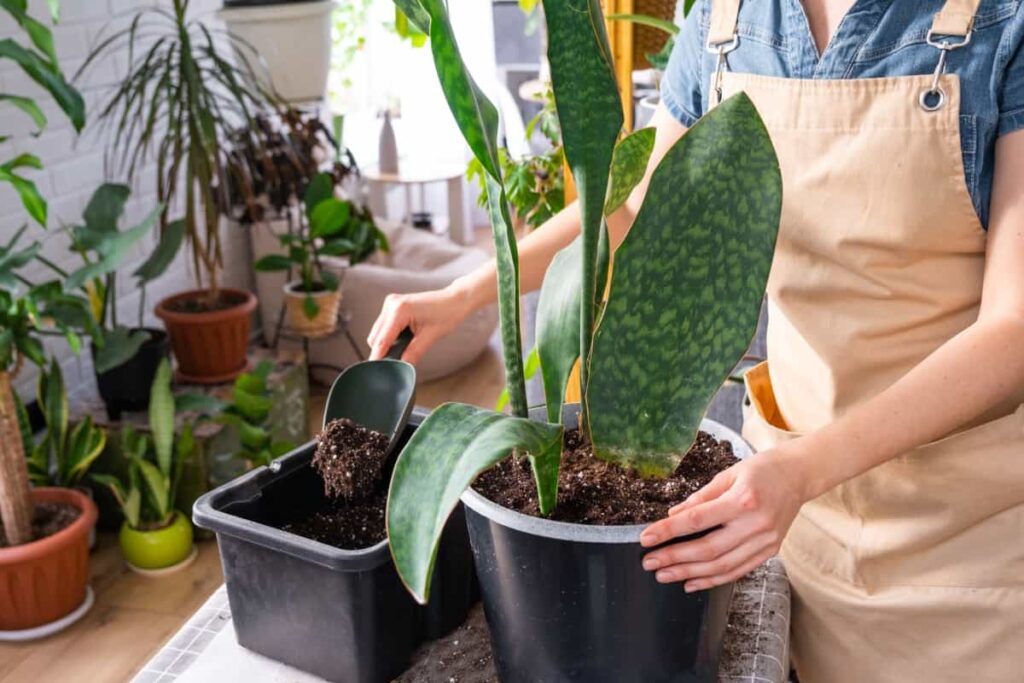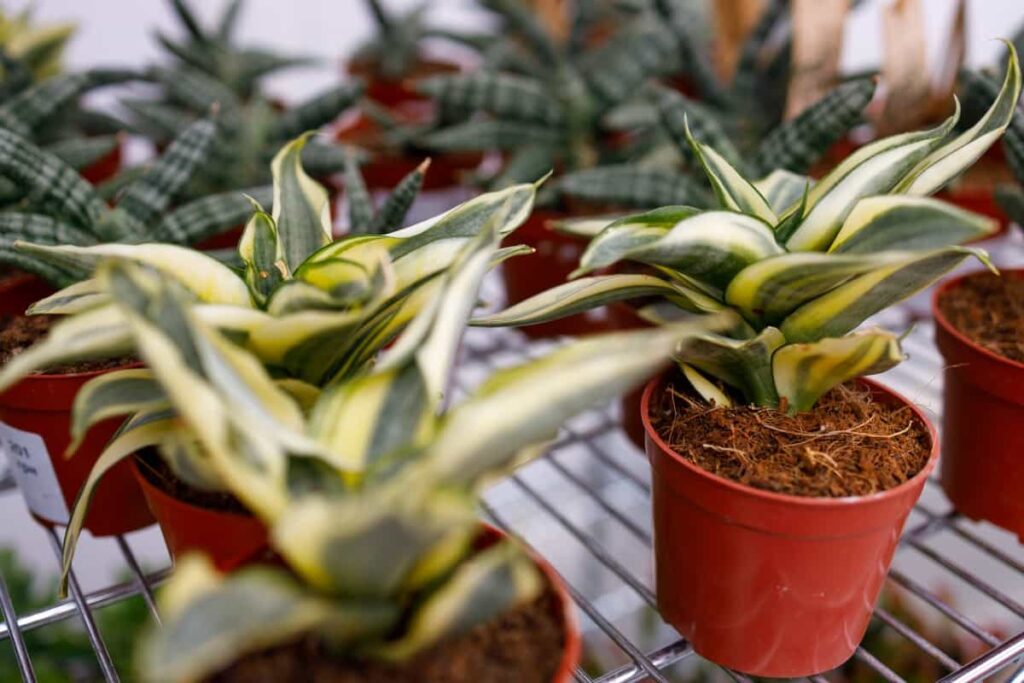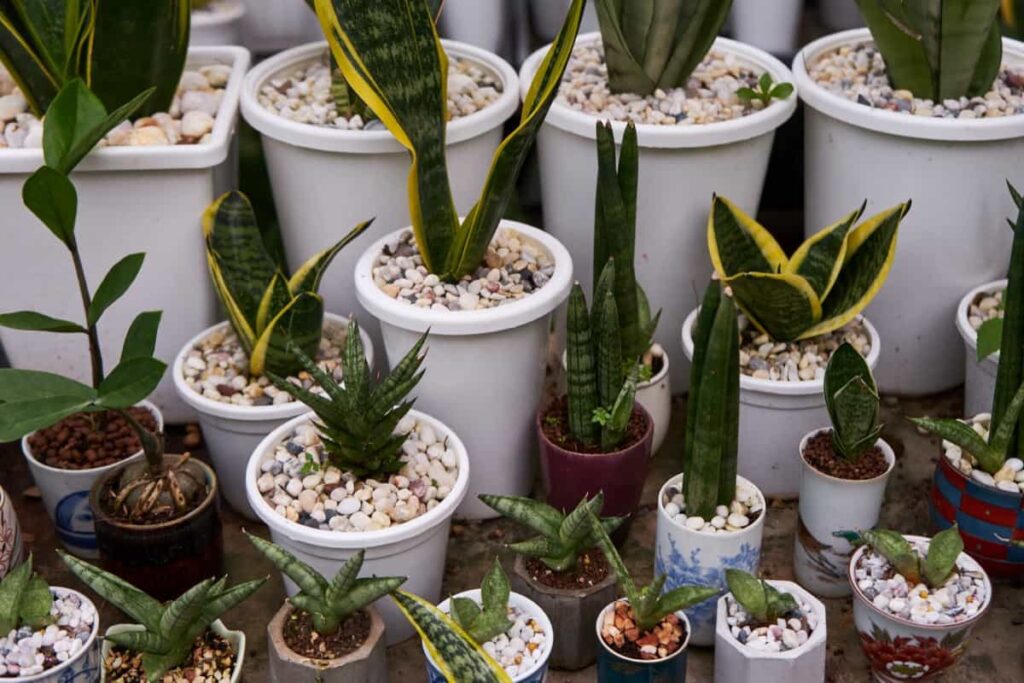The Snake Plant, or Mother-in-law’s tongue, scientifically known as Dracaena trifasciata, is a beloved houseplant that has gained popularity for its low-maintenance nature. With its long, sturdy leaves that resemble the shape of a tongue and its striking variegated patterns, the Snake plant adds an elegant touch to any indoor space.

How to Propagate Snake Plants
Selecting Healthy Snake Plant Offshoots for Propagation
Snake plant offshoots, also known as pups or babies, are small plantlets that grow alongside the mother plant. Look for offshoots that have strong and sturdy leaves. Avoid those with yellowed or wilted foliage, as this could indicate a weak or unhealthy plant. It’s best to select offshoots that have at least a few leaves of their own.
Next, check the roots of the offshoots. Choose pups that are of a decent size – not too small and not too large. Consider selecting pups from different areas of the parent plant instead of just taking them all from one spot. This will ensure genetic diversity among your propagated plants. By carefully selecting healthy Snake plant offshoots, you increase your chances of successfully propagating these beautiful houseplants and expanding your collection effortlessly.
Preparing the Soil for Snake Plant Propagation
First, choose a well-draining potting mix specifically designed for houseplants. This will ensure that excess water doesn’t sit around the roots and cause rot. Avoid garden soil as it may not provide the right balance of nutrients. Next, you can add some perlite or sand to the potting mix to improve drainage even further. These amendments help prevent waterlogging and allow air circulation around the roots.
Removing Snake Plant Offshoots from the Parent Plant
Make sure you have identified healthy offshoots that are at least 3-4 inches tall. These should have their roots forming at the base. Gently loosen the soil around the offshoot and trace its roots back to where it connects with the parent plant. Using sharp scissors, carefully cut through the root, connecting the offshoot to its parent plant.
In case you missed it: Top 20 Best Indoor Gardening Systems to Buy This Year at Cheap Price

Be cautious not to damage any roots on either side. Once separated, gently shake off any excess soil clinging to the offshoot’s roots. This will help ensure better absorption of nutrients in its new potting mix. Prepare a well-draining potting mix for your newly separated Snake plant offshoots.
Potting the Snake Plant Offshoots
Once you have successfully removed the Snake plant offshoots from the parent plant, it’s time to pot them and give them their own space to grow. Choose a pot that is large compared to the root ball of the offshoot. Fill the pot with well-draining soil, such as a mixture of succulent or cactus soil with perlite or coarse sand. Gently place the offshoot into the prepared pot, making sure that its roots are covered with soil.
You can press down lightly on the soil to secure it in place. After potting, water your newly potted Snake plant offshoot thoroughly until water drains out from the bottom of the pot. Regularly monitor your potted Snake plant offshoot for signs of growth and health. As your Snake plant grows and matures, you may need to repot it into a larger container every few years when its roots become crowded within its current pot. This allows more room for growth and prevents stunted development.
Watering the Snake Plant Offshoots
Proper watering of the Snake plant is crucial for the healthy growth of offshoots. These young plants have delicate root systems that require just the right amount of moisture. When watering Snake plant offshoots, it’s important to strike a balance. Water thoroughly, but avoid leaving them sitting in standing water. Remember not to pour excess water directly onto the leaves of the plant, as this can encourage fungal diseases and rotting. Instead, aim for watering around the base of each offshoot.
Providing Adequate Light for Snake Plant Offshoots
Too much direct sunlight on the Snake plant can scorch the leaves and hinder growth, while too little light can result in weak and leggy stems. Ideally, Snake plants should be placed in bright, indirect light. Healthy leaves are typically dark green with yellow variegation, indicating that they are receiving just the right amount of light. Pale or bleached leaves may suggest insufficient lighting, while stunted growth could signify too much shade. Remember that different varieties of Snake plants have varying tolerances for different lighting conditions.
Ensuring Proper Temperature and Humidity for Snake Plant Offshoots
Temperature and humidity are the major factors in the successful propagation of Snake plants. These resilient houseplants thrive best in temperatures ranging from 15 to 29°C. Extreme cold or hot temperature levels can harm the offshoots, so it’s important to keep them within this optimal range. When it comes to humidity, Snake plants prefer moderate levels. They do best in environments with around 40-50% humidity.
In case you missed it: Best Vines for Containers: 10 Best Climbing Plants for Pots

To maintain these humidity levels, you can use a humidifier or place the pots on trays filled with water and pebbles. During the winter season, when indoor heating dries out the air, misting the leaves of your Snake plant offshoots occasionally can help increase humidity around them. However, be cautious not to oversaturate the soil, as excessive moisture can affect root rot.
Monitoring Snake Plant Offshoot Growth and Health
Once you have potted your Snake plant offshoots, it’s important to monitor their growth and health. This will ensure that they are thriving and developing into strong, mature plants. Observe the leaves of your Snake plant offshoots for any signs of discoloration or damage. Healthy plant leaves should be a vibrant green color without any browning or yellowing.
If you notice any issues with the leaves, such as spots or wilting, take appropriate action to address the problem promptly. Keep an eye out for new growth emerging from the center of each offshoot. This indicates that your plants are actively growing and developing. It’s a good sign that they are receiving adequate light and nutrients.
Repotting the Snake Plant Offshoots
To begin the repotting process, select a pot that is slightly large compared to the current one. Make sure the pot has drainage holes to prevent waterlogging. Next, prepare fresh, well-draining soil mix suitable for Snake plants. You can use regular potting soil, perlite, or sand for added drainage. Carefully remove the offshoot from its current pot by gently loosening the soil around it with your fingers.
Be cautious not to damage any delicate roots in this process. Place the offshoot in its new pot and add fresh soil around it, making sure not to bury it too deep or leave any air pockets. Slightly pat down the soil to secure the offshoot in place. After repotting, water your Snake plant thoroughly, but avoid overwatering it, as this affects root rot. Remember that newly repotted Snake plant offshoots may experience some transplant shock initially.
Caring for Established Snake Plant Offshoots
Firstly, you want to ensure that each offshoot has its root system before attempting separation. This typically occurs when the pup reaches about one-third the size of the mother plant. To separate an offshoot from its parent plant, gently loosen the soil around its base and carefully lift it out with your hands or a clean gardening tool.
Be sure to handle them with care so as not to damage their delicate roots. As your Snake plant offspring grow in their new homes, monitor their progress closely and adjust care accordingly. Provide bright indirect light without exposing them directly under harsh sunlight, which may scorch their leaves.
Frequently Asked Questions (FAQ) on Propagate Snake Plants
How Do I Know When My Snake Plant Is Ready for Propagation?
Look for offshoots (also called pups) that emerge from the base of the mother plant. These can be separated and propagated into new individual plants.
When Should I Propagate Snake Plants?
The best time for propagation is during the spring or early summer season when the Snake plant is actively growing. This ensures higher success rates in establishing new roots.
In case you missed it: How to Grow Snake Plants: A Guide to Planting and Care

How do I Identify Suitable Offshoots for Promotion?
Look for healthy offshoots that have developed their root system and are at least a few inches tall. They should be well-established enough to survive on their own.
Conclusion
Propagating Snake plants can bring numerous benefits to both seasoned plant enthusiasts and beginners alike. By growing new offshoots from an existing mother plant, you can easily multiply your collection and make a lush green oasis within your home.
- Management Pests and Diseases in Your Cotton Field
- Sheep Farming Business Plan for Beginners
- Aquaponic Farming at Home: A Step-By-Step Guide
- Profitable Village Farming Business Ideas in 2024
- High-Yield Aquaculture: Fast-Growing Fish for Farming
- Effective Fish Pond Construction Techniques for Beginners
- Irrigation and Water Management in Pineapple Farming
- Blossom to Harvest: Mastering Flowering and Pollination in Papaya Farming
- Pig Fattening Essentials: From Selection to Sale for Beginners
